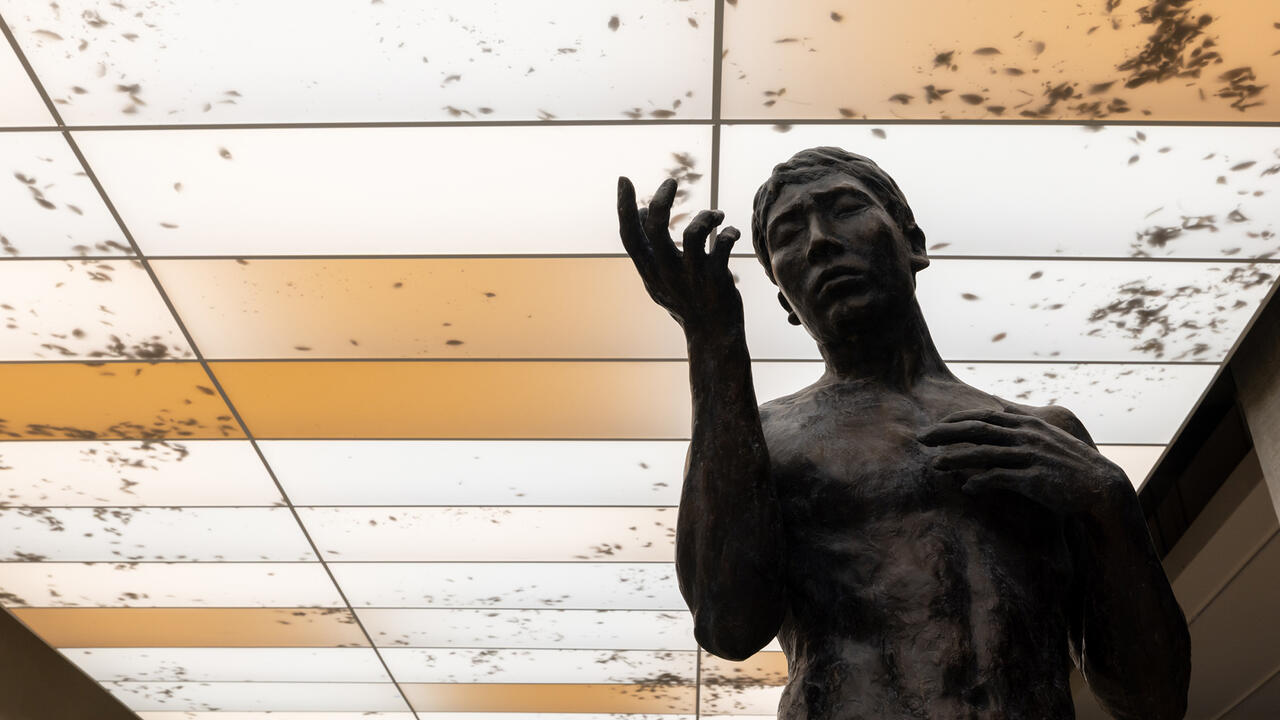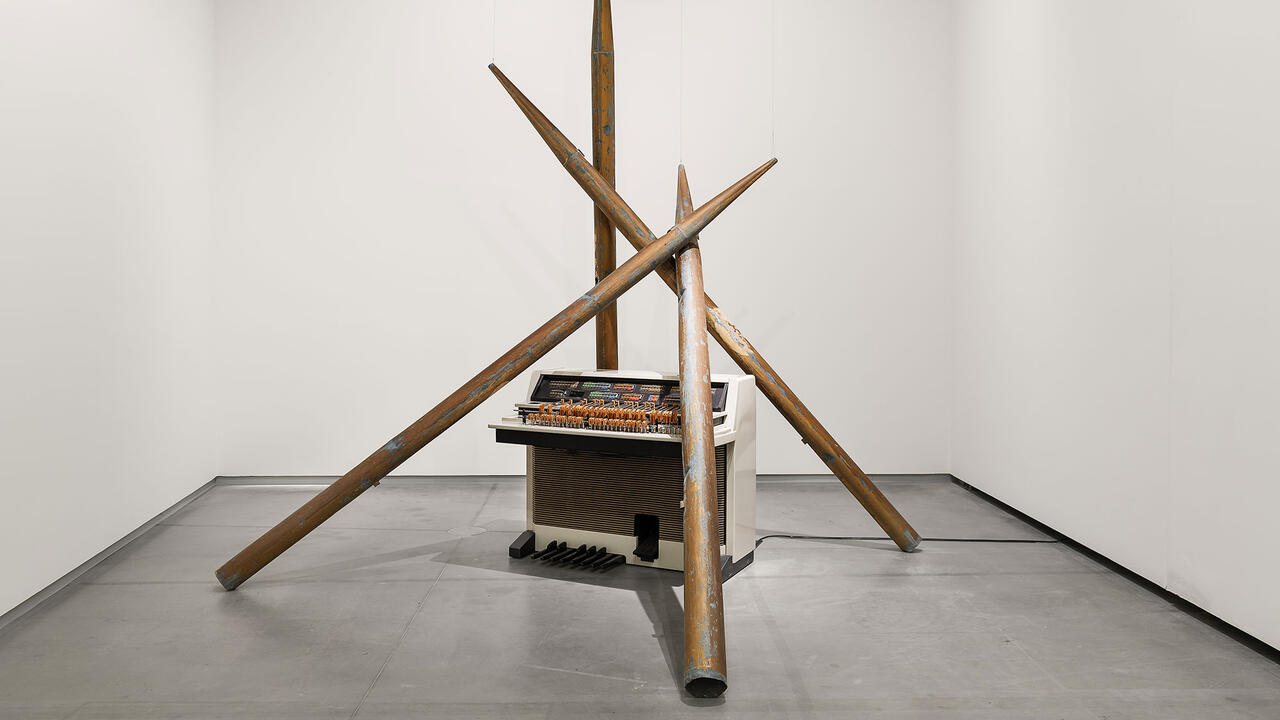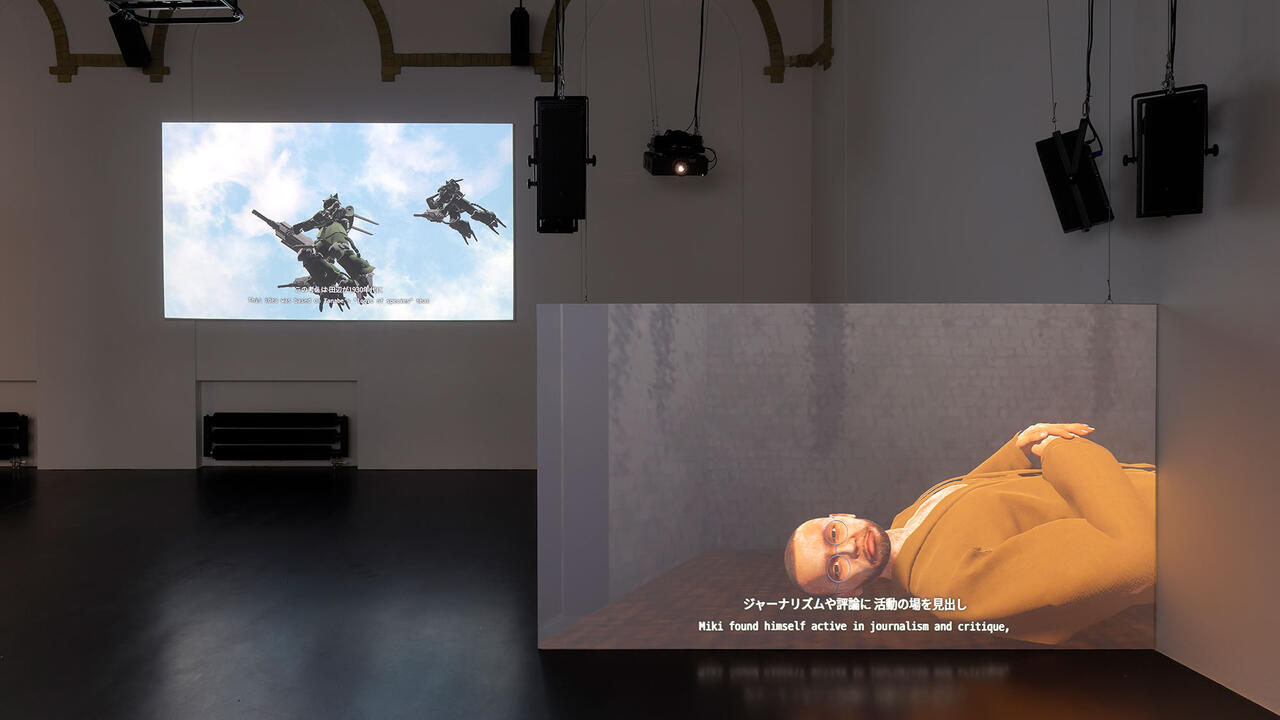Andrea Bowers
‘Please help me as soon as possible’, says the woman in a determined but shaky voice speaking straight to camera. In the background the studio is decorated like the corner of a living-room, with wallpaper and an orchid in an orange pot. A dissolve reveals a second flower arrangement: a delphinium and carnations in front of a brocade wall-hanging with a floral pattern. ‘June 4th, Korea,’ the young black woman begins, ‘abortion is the only solution.’ She intones her appeal as though reading lines from a play; she is looking for ‘hygienic surgery’. The third appeal comes from a ‘devout Catholic’ who cannot give her address and asks to be called back; she needs a doctor who will operate on a Sunday, because she has to work all week and no one must find out.
The words being read from the tele-prompter here are original texts. Their tone is almost as mechanical as a job application, and their source is indeed official: these are the words of three Americans – Rowena Garner, Patricia Maginnis and Lana Pheelan – who in the late 1960s led the feminist crusade for abortion rights. Their activities included demonstrations and television appearances, as well as lectures in schools, for which they devised a do-it-yourself abortion kit. But, above all, their office in San Francisco was a kind of ante-room for doctors’ surgeries in Japan and Mexico, whose addresses they passed on to women who came to them for help from all over the USA. More than 5,000 pregnant women received assistance before the operation was legalized in the early 1970s.
Andrea Bowers has plundered the activists’ correspondence from 1968 and used the material to play with three interlocking modes of presentation. First, she took these letters asking for help and rendered them anonymous with a black pen and enlarged them on a photocopier. One set of the resulting A2 sheets was pasted straight onto the wall, with brightly coloured paper establishing an informal connection between the posters. A luxurious black-bound volume contained a second set of papers also hung on the wall, with the fine patterning of the separate sheets lending the archive the look of something precious. Shot on video, actors read out the original letters word for word as if they were the script for a short play.
The Letters to the Army of Three (2005) constitute three proposals for a monument to many individuals: the invitation card depicted a demonstrator with a placard bearing a reminder that more young people have died as a result of illegal abortions than were killed in the Korean War. In this way Bowers breaks a successful mass movement back down into individual faces and personal histories, but by showing three parallel versions she makes commemoration itself a theme. Who is remembering whom? What form is appropriate to such an art? And where is the dividing line between the authentic and the aesthetic? By profession Bowers is an artist, but as a human being she is an activist, driven, as she has stated, by a fear of amnesia. When she recorded on video the occupation of a 400-year-old oak by environmental activists, she focused on the form the resistance took. Bowers is interested in symbolic actions such as weaving the gates of the Pentagon shut, and finds a choreography in demonstrators linking arms. She weaves the rituals and strategies of political dissidence into artistic ornaments and positions. As she states, ‘In the art world of the last ten or 15 years, there seems to be an ideological break between aesthetics and politics, which are represented in polemical terms as opposites. My aim with this project was to show a way in which aesthetics and politics can serve each other.’
In the past, the curator of the Van Horn independent exhibition space, the artist Daniela Steinfeld, has staged boldly contrasting series of events. She began one programme with a show by the cartoonist Robert Crumb, followed by works by the anthroposophist Rudolf Steiner and paintings by Nicole Eisenman – a Euro-American interplay that relies on visitors bearing the preceding shows in mind. The fact that the first full presentation of this memorial to the three pro-abortion campaigners took place in Germany gives it an unexpected topicality, as abortion is still a punishable offence there – although legal action is never taken – and a detailed body of legislation, including a test of conscience, regulates treatment that is officially banned but unofficially tolerated by the state. This made the show’s historically asynchronous tone sound like a clarion call.
















